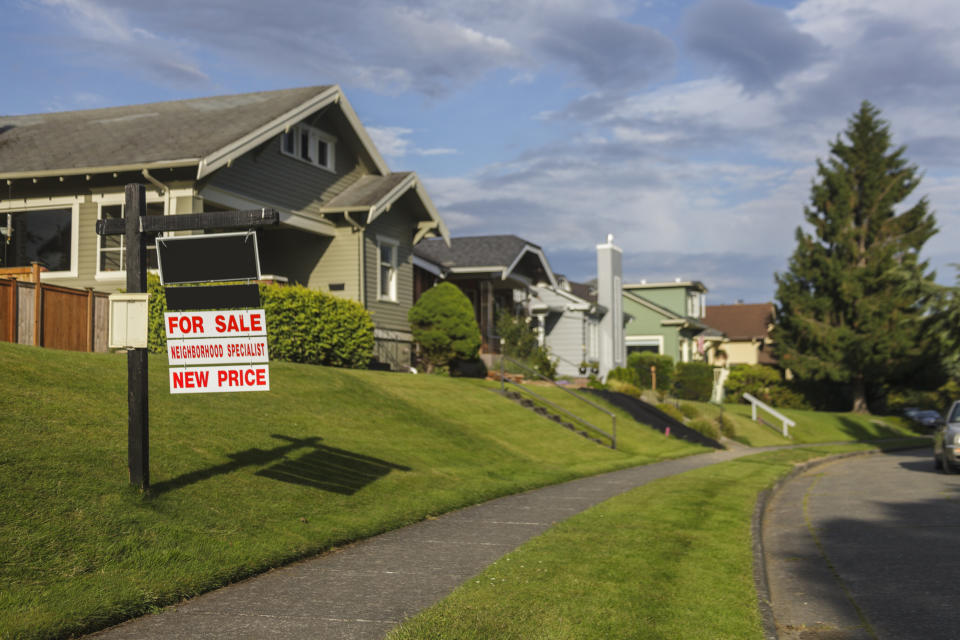It's taking longer to sell a home in the U.S.
Housing demand in some of the hottest metropolitan markets in the U.S. is waning.
For the first time in almost three years, the number of homes for sale did not drop from a year ago, according to new data by Trulia. Inventory was kept steady in the first quarter of 2019 by an increase in the number of starter- and trade-up homes on the market, inventory was up 3.5% and 4.8%, respectively, from a year ago. The gains in those segments mainly came from pricey West Coast cities like Seattle and San Jose, where home prices have skyrocketed.
“In a lot of the exciting markets, where it has been a crazy seller’s market, the rising inventory is being driven by days on the market,” said Felipe Chacon, an economist at Trulia. “Homes are sitting on the market. Demand has dropped off.”
While inventory is up, the number of newly listed homes nationwide was down 6.9% to 273,282 homes year-over-year in the first quarter from the same period last year, according to Trulia. Since the number of newly listed homes is down, that means homes aren’t selling as fast as they used to, especially in some major markets.
Homes in Seattle, for instance, are now selling at a median of 69.5 days on the market, compared with 52.8 days a year ago, according to Trulia. Nationwide, the median number of days a home stayed on market was up 1.5% year-over-year, according to Trulia.
“In some markets there was a strong run up in prices but that consequently led buyers to say time-out,” said Lawrence Yun, chief economist for the National Realtors Association. NAR data similarly reveals year-over-year inventory increases for eight consecutive months.

Prices in many of these markets are still on the rise but the gains are slowing. According to the most recent S&P CoreLogic Case-Shiller 20-City Composite, Los Angeles, San Francisco and San Diego had the three slowest price increases in February over the last year.
“We have had an acute inventory shortage last year, now it looks like things are becoming normal,” said Yun, adding that historically low inventory levels have stifled sales activity in 2018. “More inventory means sellers need to be more realistic pricing homes in order to attract buyers.”
No longer a sellers’ market
The good news is that more inventory coupled with low mortgage interest rates and strong job creation and economic growth will eventually lead to more sales activity. And it will shift the market in favor of buyers.
Brokerage Redfin last month reported that in the U.S. markets where it does business 56% of buyers who purchased a home in the first quarter closed on the very first home they made an offer on, up from 52% a year earlier — the highest first-offer success rate in three years. The largest percentages, 59% and 63%, were recorded in Seattle and San Jose, respectively.
“Last year homebuyers had to pull out all the stops to land a home in competitive West Coast markets, but this year there are more homes for sale and the odds are more in the buyer’s favor,” said Redfin chief economist Daryl Fairweather.
“It will take time. there will be little resistance to prices,” said Yun. “In the second half of the year we will begin to see higher home sales compared to last year.”
Last month, Realtor.com updated its forecast for the 2019 housing market. Realtor.com said the influx of inventory combined with lower mortgage rates will likely spur sales but it’s a little bit more cautious than Yun. The company had previously estimated sales slipping 2% this year. Now it said sales will be flat.
Amanda Fung is an editor at Yahoo Finance.
Related stories
Home price growth decelerates in February
U.S. home prices grow at slowest pace in 4 years
Home price gains slip in November
